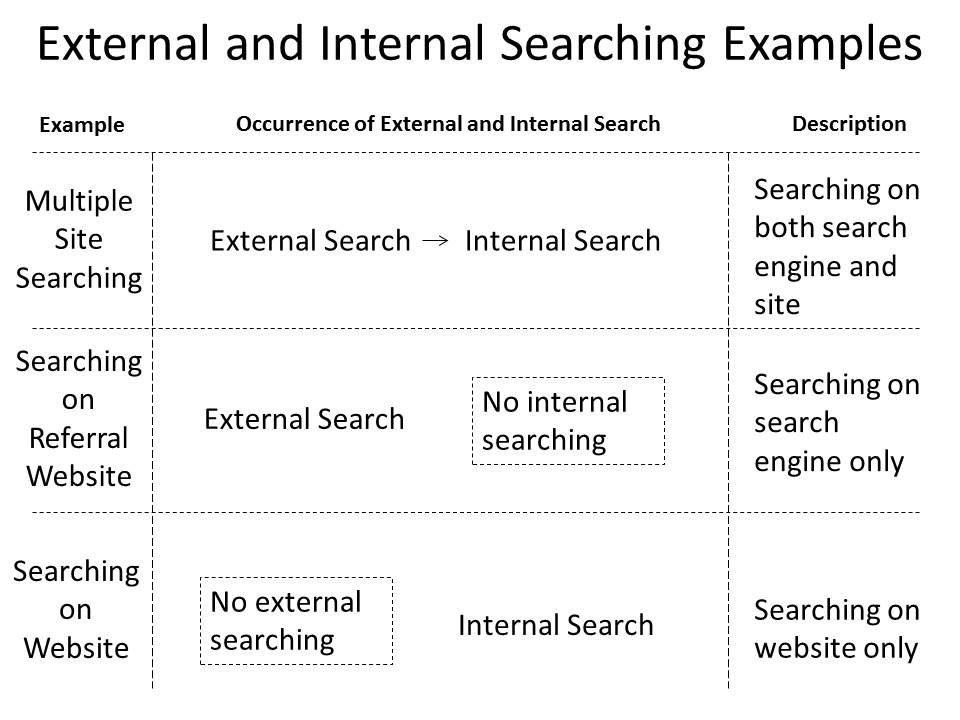Have you ever felt like your website’s true potential is locked away, hidden from the prying eyes of search engines? It’s time to unleash the power within and embark on a journey to conquer the realm of internal optimization. Brace yourself for a captivating exploration where every twist and turn leads you closer to unraveling the secrets of search engine dominance. Get ready to master the art of unlocking your website’s search engine potential and watch as your online presence soars to new heights. Welcome to a world where creativity meets strategic prowess, where your website’s destiny lies within your hands. Join us as we dive deeper into the mysteries of internal optimization and unlock the unlimited possibilities that await you.
Table of Contents
- Unleashing the Power of Internal Links: Boosting Your Website’s Visibility and Rankings
- Harnessing the Potential of Keyword Optimization: Maximizing Organic Traffic and Relevance
- Leveraging Metadata for Enhanced Search Engine Crawling and Indexing
- Unveiling the Power of XML Sitemaps: Ensuring Easy Navigation and Indexing for Search Engines
- Q&A
- To Wrap It Up

Unleashing the Power of Internal Links: Boosting Your Website’s Visibility and Rankings
The backbone of a successful website lies in its ability to harness the power of internal links. These links, which connect one page to another within your website, not only improve navigation and user experience but also play a crucial role in enhancing your website’s visibility and rankings on search engines. No matter how great your content may be, without a strong internal linking strategy, your website may remain hidden in the vast online landscape.
So, how can you unlock the search engine potential of your website through internal optimization? Let’s explore some key tips and tactics:
1. Create a logical hierarchy: Organize your website’s pages in a clear and logical structure. Use categories and subcategories to help search engines understand the relationships between various pages.
2. Utilize anchor text: Anchor text refers to the clickable text that is used for a hyperlink. Be intentional and descriptive when choosing anchor text, as it helps search engines understand the context and relevance of the linked page. For example, instead of using generic text like “click here,” opt for descriptive anchor text like “learn more about the benefits of internal linking.”
3. Link deep within your website: Don’t limit your internal links to just the homepage or main navigation menu. Take advantage of opportunities to link to relevant pages within your content. This not only improves user experience but also allows search engines to discover and index more of your website’s pages.
4. Keep it natural: While internal links are important, it’s crucial to maintain a natural and user-friendly approach. Avoid stuffing your content with excessive links or using irrelevant anchor text, as this can be seen as spammy behavior by search engines.
By adopting these internal optimization strategies, you can unleash the true potential of your website, boosting its visibility, search engine rankings, and ultimately, attracting a larger audience to your online presence. So, get creative with your internal linking, and watch your website soar to new heights!
Harnessing the Potential of Keyword Optimization: Maximizing Organic Traffic and Relevance
Keywords are the secret sauce to boosting your website’s visibility and attracting organic traffic. By optimizing your content with relevant keywords, you can unlock your website’s full search engine potential and gain an edge over your competitors. But what exactly is keyword optimization, and how can you maximize its impact?
Think of keyword optimization as a roadmap that directs both search engines and users to your website. When you strategically incorporate keywords into your website’s content, meta tags, and headers, you signal to search engines that your website is relevant to specific search queries. This, in turn, helps your website rank higher in search engine results pages (SERPs), making it more likely to be clicked on by users.
- Unleash the power of long-tail keywords: Unlike generic keywords, long-tail keywords are more specific and often have a lower search volume. However, they are highly targeted and less competitive, giving you a greater chance of ranking higher in search results. For example, instead of targeting “shoes,” you could optimize for “affordable running shoes for beginners.”
- Strike a balance between relevance and search volume: While it’s important to choose keywords that are relevant to your content, it’s equally crucial to consider their search volume. Aim for keywords with a decent search volume to attract a substantial amount of traffic, but avoid highly competitive ones, as it can be challenging to rank for them.
- Examine your competitors’ keywords: Conduct a thorough analysis of your competitors’ websites to identify the keywords they are ranking for. This can give you valuable insights into which keywords are performing well in your industry and help you tailor your optimization strategy accordingly.
- Optimize your website structure: Organize your website’s content using a clear and logical hierarchy. This not only improves user experience but also helps search engines understand the relevance and importance of each page. Utilize header tags (H1, H2, H3) to structure your content and incorporate keywords in them to further boost optimization.

Leveraging Metadata for Enhanced Search Engine Crawling and Indexing
When it comes to maximizing your website’s search engine potential, internal optimization plays a crucial role. One powerful tool in your arsenal is leveraging metadata – those hidden snippets of information that provide valuable context to search engines. By properly utilizing metadata, you can revolutionize the way search engine crawlers perceive and index your website, ultimately boosting your visibility in search results.
So, how can you make the most of metadata? Here are some key tips to get you started:
- Optimize your title tags: Craft unique and descriptive title tags for each page on your website. These HTML elements appear as clickable links in search results and provide search engine bots with a clear understanding of your page’s topic. Make sure you incorporate relevant keywords to enhance your website’s visibility.
- Create compelling meta descriptions: Meta descriptions serve as concise summaries of your web pages. While they don’t directly impact search rankings, they play a crucial role in attracting users to click on your site in search results. Make your meta descriptions engaging, informative, and within the recommended character limit to entice searchers.
- Utilize header tags: Headers, represented by HTML tags like h1, h2, h3, etc., act as signposts for search engine crawlers. By using descriptive headers, you not only organize your content for better user experience but also assist search engines in understanding the structure and relevance of your page.

Unveiling the Power of XML Sitemaps: Ensuring Easy Navigation and Indexing for Search Engines
XML sitemaps are a powerful tool that can significantly enhance your website’s visibility on search engines. By providing a well-organized roadmap of your website’s pages, XML sitemaps ensure that search engine crawlers can easily navigate through your content, thus improving indexing and ultimately leading to higher rankings.
One of the key advantages of XML sitemaps is their ability to help search engines discover and understand the structure of your website. Think of it as a handy index that directs search engine bots to the most important pages, ensuring they are not missed during the crawling process. This is particularly useful for complex websites with multiple levels of navigation, such as e-commerce platforms or news websites. XML sitemaps help search engines find important content buried deep within your website, giving it a better chance of being indexed and displayed in search results.
Moreover, XML sitemaps allow webmasters to provide additional metadata about their webpages, such as the last modified date or the priority of a particular page. This information helps search engines understand the importance and freshness of your content. By utilizing XML sitemaps, you can easily prioritize which pages should be crawled more frequently, ensuring that search engines pay attention to your most valuable content. Additionally, XML sitemaps can also point out alternate language versions of your webpages, making them indispensable for international websites. Remember, XML sitemaps are not a replacement for good internal linking, but they complement it, helping search engines explore your website more effectively. So why not take advantage of this powerful tool and unlock your website’s true search engine potential?
Q&A
Q: What is internal optimization and why is it important for my website’s search engine potential?
A: Internal optimization refers to the process of improving your website’s structure, content, and other on-page elements to enhance its visibility and ranking on search engine results pages (SERPs). It plays a crucial role in boosting your website’s search engine potential by ensuring that search engines can easily crawl, index, and understand your content.
Q: How can I optimize my website internally?
A: There are several key aspects to consider when optimizing your website internally. Firstly, you should focus on creating high-quality, relevant, and engaging content that incorporates relevant keywords strategically. Additionally, implementing well-structured URLs, optimizing meta tags, and utilizing header tags effectively will help search engines understand the hierarchy and relevance of your content. User-friendly navigation, internal linking, and optimizing image alt tags are also essential components of internal optimization.
Q: Could you explain the importance of keyword research in internal optimization?
A: Keyword research is an integral part of internal optimization as it helps you identify relevant search terms that your target audience is using. By incorporating these keywords naturally in your content, you increase the likelihood of search engines recognizing your website’s relevance for specific search queries. Keyword research also allows you to uncover niche search terms that may have less competition, potentially giving your website a competitive advantage.
Q: How can the website’s structure impact internal optimization?
A: The structure of your website plays a vital role in internal optimization. Search engines prioritize websites with a clear and logical hierarchy, as it makes it easier for them to understand the content and index it accordingly. A well-structured website with organized categories, subcategories, and navigation ensures that search engines can easily crawl and interpret your content. This improves the overall visibility and accessibility of your website’s pages, thus enhancing its search engine potential.
Q: Is it necessary to regularly update and maintain my website’s internal optimization?
A: Yes, it is crucial to regularly update and maintain your website’s internal optimization. Search engine algorithms constantly evolve, and your competitors might also optimize their websites, which means you need to stay ahead. By regularly reviewing and updating your content, meta tags, and other on-page elements, you ensure that your website remains optimized for the latest ranking factors. A proactive approach to maintaining internal optimization can help you maintain or improve your search engine potential over time.
Q: Are there any pitfalls or mistakes to avoid in internal optimization?
A: Absolutely! One common mistake is over-optimizing your website with excessive use of keywords or engaging in shady practices like keyword stuffing. This can result in penalties from search engines and negatively impact your website’s search engine potential. Additionally, ignoring user experience and solely focusing on search engine optimization can lead to a poor website experience, discouraging users from engaging with your content. It’s important to maintain a balance between optimization and user-friendliness.
Q: Can internal optimization guarantee top rankings on search engine results pages (SERPs)?
A: While internal optimization is essential for improving your website’s search engine potential, it does not guarantee top rankings on SERPs. Search engine algorithms consider numerous factors beyond internal optimization, such as external links, backlinks, domain authority, and user signals. However, by mastering internal optimization, you increase your chances of ranking higher and attracting organic traffic to your website, thus maximizing its search engine potential.
Insights and Conclusions
As we come to the end of this exhilarating journey, we hope that you have found the key to unlocking your website’s true search engine potential. By delving into the depths of internal optimization, we have unwrapped the secrets that lie within the intricate digital labyrinth of your website.
Throughout this article, we have witnessed the profound impacts that carefully crafted internal optimization can have on elevating your online presence. We’ve journeyed through the corridors of meta tags, sculpted the path of compelling content, and uncovered the hidden passages of structured data. Each step along the way promises to contribute to your website’s triumph in the search engine arena.
But remember, dear reader, that mastering internal optimization is not a one-time pursuit but an ongoing quest. As search engines continually evolve, so too must our strategies. Stay vigilant and adaptable to the ever-changing algorithms that dictate the virtual world. Embrace the winds of change and let them guide you towards new horizons of organic visibility.
Only through a holistic understanding of your website’s architecture and an unwavering commitment to quality can you truly unleash its search engine potential. Embrace the power of internal optimization as your ally and ascend to the heights of digital prominence.
Now, armed with the knowledge and insight gleaned from this exploration, it’s time for you to embark on your own adventure. So go forth and breathe life into your website, infusing it with the essence of optimized performance. Unleash your creativity, harness your passion, and let your website forge its path to greatness.
With each carefully crafted element, each meticulously optimized nook, and each perfectly aligned strategy, you will unlock doors to a world of untapped opportunities. And remember, this journey is not only about your website, but about your own growth as a digital mastermind.
So, dear reader, we bid you farewell on this voyage. May you conquer the ever-changing tides of search engine algorithms, unlocking your website’s true potential and propelling it towards the success it deserves. Until we meet again, in the vast ocean of digital possibilities, embrace the power of internal optimization, and let your website soar to new heights.

